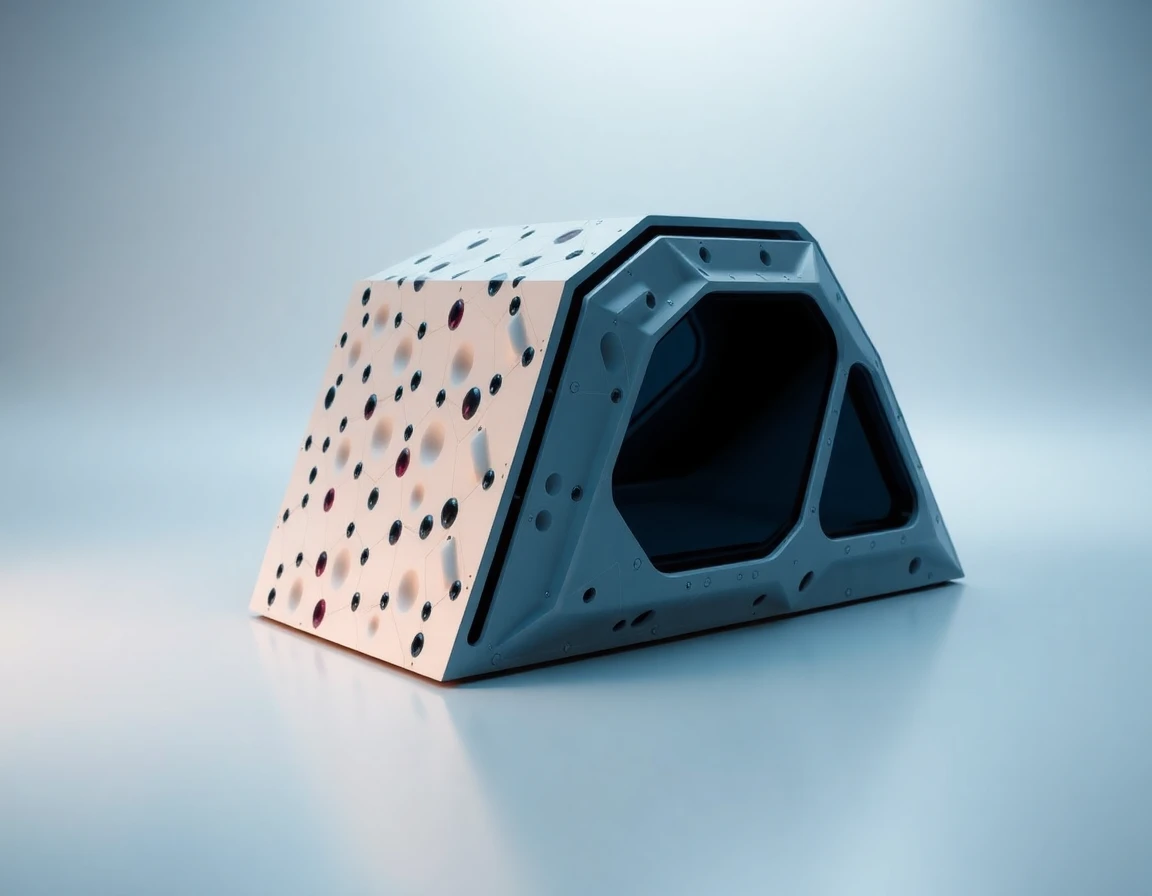In recent years, the aerospace and defense sectors have witnessed a groundbreaking advancement in stealth technology: metamaterial stealth. This innovative approach leverages the unique properties of metamaterials to create platforms that can evade detection by radar, infrared, and other sensing technologies. With the ongoing arms race for superior military capabilities, metamaterial applications are set to revolutionize how stealth is perceived and implemented.
Understanding Metamaterials
Metamaterials are engineered materials with properties not found in naturally occurring substances. These materials manipulate electromagnetic waves in unprecedented ways, enabling the development of devices that can bend, absorb, or redirect radar signals. According to Dr. Sarah Thompson, an expert in material science at the National Defense Research Institute, “The ability of metamaterials to control electromagnetic waves at will is a game-changer for stealth applications.”
Key Characteristics of Metamaterial Stealth
-
Frequency Manipulation: Metamaterials can be designed to operate effectively across a range of frequencies, making them versatile for various stealth applications. This capability allows military platforms to remain undetectable across different radar systems.
-
Lightweight Design: The lightweight nature of metamaterials provides an added advantage in aerospace applications, where weight is crucial for performance. Aircraft utilizing metamaterial technology can achieve enhanced maneuverability and fuel efficiency.
-
Broadband Absorption: Unlike traditional stealth technologies, which often only work at specific frequencies, metamaterials can absorb a wide range of electromagnetic waves, thus increasing the overall effectiveness of stealth capabilities.
Real-World Applications of Metamaterial Stealth
Aircraft and Drones
The United States Air Force is actively exploring metamaterial stealth for its next-generation fighter jets. These advancements could lead to aircraft that are not just stealthy but also feature integrated systems for real-time data processing and threat assessment. According to Colonel Mark Davis, a senior aerospace engineer, “The convergence of metamaterials and advanced inertial navigation systems will ensure that our aircraft remain one step ahead of adversaries.”
Naval Vessels
Naval platforms are also set to benefit from metamaterial advancements. Submarines equipped with metamaterial coatings can significantly reduce their radar cross-section, making them less detectable to enemy sonar and radar systems. The incorporation of metamaterials in naval architecture could redefine stealth in maritime operations.
Ground Vehicles
Metamaterials can enhance ground vehicle stealth as well. Armored vehicles with metamaterial coatings can reduce their infrared signatures, making them less visible to heat-seeking missiles. This innovation has the potential to save lives and enhance mission success rates in hostile environments.
The Role of Advanced Imaging Systems
To complement metamaterial stealth applications, high-performance imaging systems such as the Visible Light CMOS Imaging Component Series are being integrated into military platforms. These systems allow for enhanced situational awareness and targeting capabilities, even in low-visibility conditions. As Dr. Emily Chen, a defense technology analyst, notes, “The synergy between metamaterial stealth and advanced imaging is crucial for modern warfare, enabling forces to operate effectively without compromising their stealth capabilities.”
Future Developments and Challenges
While the potential of metamaterial stealth is immense, several challenges remain. The manufacturing process for metamaterials is complex and often costly, which may hinder widespread adoption. Additionally, the ongoing research and development efforts require collaboration between academic institutions and defense contractors to overcome these technical hurdles.
Experts predict that as production techniques improve, we will see more practical applications of metamaterials in various military and civilian technologies. “The future of metamaterial stealth lies in its scalability and integration into existing platforms,” says Dr. Thompson. “The faster we can bring these innovations to the field, the better our defense systems will be.”
Conclusion
Metamaterial stealth technology represents a significant advancement in the quest for invisibility on the battlefield. By manipulating electromagnetic waves, these materials provide unprecedented stealth capabilities across various platforms, from aircraft to naval vessels. As research continues and production methods evolve, the potential applications of metamaterials in aerospace and defense are only beginning to be realized. The integration of advanced systems, like inertial navigation systems and imaging technologies, will further enhance operational effectiveness, ensuring that metamaterial stealth remains at the forefront of military innovation.
References
-
metamaterial stealth Research - defensenews.com (defensenews.com)
-
metamaterial stealth Research - aviationweek.com (aviationweek.com)
-
metamaterial stealth Research - spacenews.com (spacenews.com)



